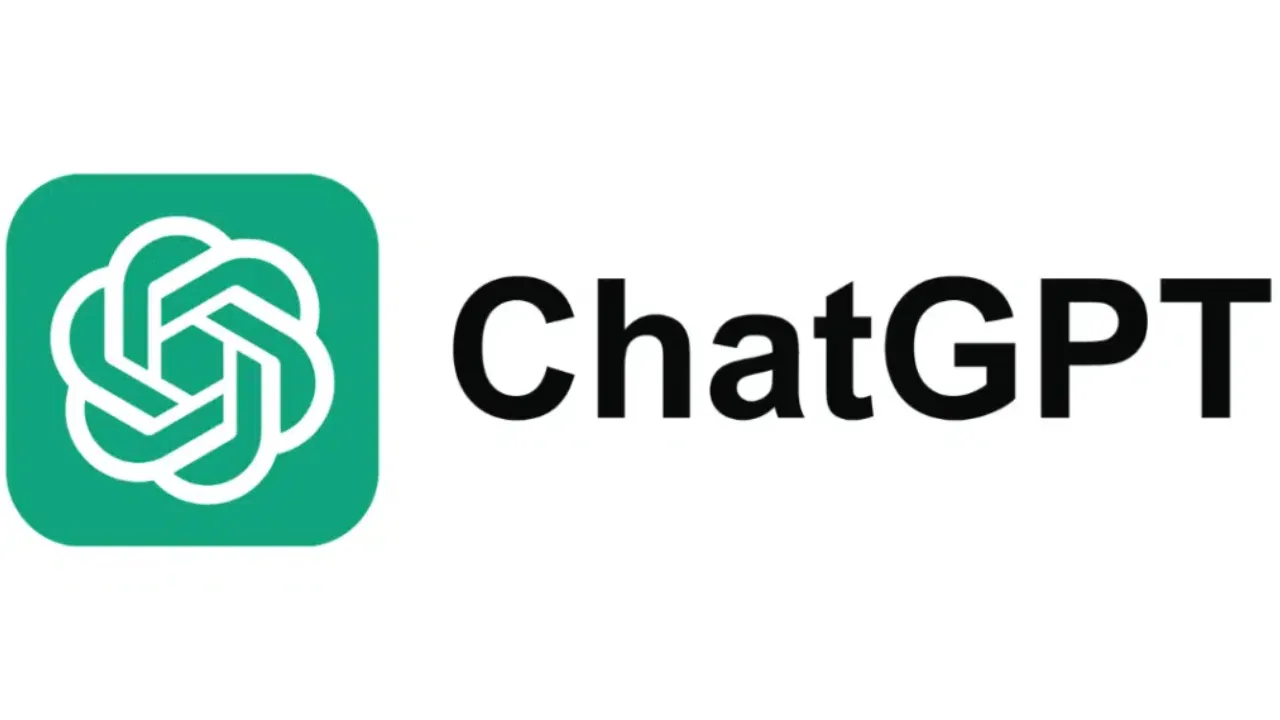Introduction – The Growing Threat of Scam Links
Scam links have become one of the most common and dangerous tools used by cybercriminals today. Whether it’s through SMS, email, or messaging apps, unsuspecting users are often tricked into clicking on malicious links that steal sensitive information or install harmful software. With the increasing use of smartphones and online services in India, this problem is growing rapidly, making digital safety a top concern for both users and service providers.
Airtel has recognized this threat and taken a significant step forward by introducing an advanced AI-powered fraud detection system. The need for such a solution has never been more urgent. Every day, millions of scam attempts are launched, targeting everything from bank details to social media accounts. People are falling victim not because they’re careless, but because the scams have become smarter and more convincing.
This is where Airtel’s new system stands out. The telecom giant has developed a solution that can detect and block scam links in as little as 100 milliseconds. This rapid response is a game-changer in the fight against digital fraud. By integrating artificial intelligence and machine learning, Airtel is creating a safer mobile experience for its users.
In a world where online threats are evolving daily, Airtel’s initiative is not just timely—it’s necessary.
What Is Airtel’s AI-Powered Fraud Detection System?
Airtel’s AI-powered fraud detection system is a cutting-edge, network-level solution designed to identify and block scam links in real-time. It operates automatically for all Airtel mobile and broadband users, with no need to install apps or change settings. The goal is simple—stop malicious links before they can do any harm.
Airtel’s system has already blocked over 1.8 lakh scam links within weeks of rollout, proving its speed and accuracy in real-world usage. This system uses a dual-layer AI model. The first layer functions at the network level, analyzing user behavior such as call and SMS patterns, frequency of device changes, and unusual activity. The second layer digs deeper into threat detection by scanning billions of URLs daily and comparing them with known global scam databases and Airtel’s internal blacklist.
What makes this system truly powerful is its speed. Suspicious links are identified and blocked in less than 100 milliseconds. Once blocked, the user is instantly redirected to a warning page, preventing any chance of accidentally falling for a scam.
Airtel’s fraud detection platform is not limited to just SMS or email. It works across popular platforms like WhatsApp, Telegram, Facebook, Instagram, and web browsers. This wide coverage ensures that users remain safe regardless of how or where a scam attempt is made.
Since its launch, the system has already blocked thousands of scam links and protected millions of users across various states. By using advanced AI and machine learning, Airtel is delivering a robust shield against digital fraud, setting a new standard for telecom security in India. This move not only enhances user safety but also builds greater trust in Airtel’s commitment to secure communication.
How the 100ms Blocking Works: Real-Time Protection Explained
Airtel’s AI-powered fraud detection system is built for speed—and that’s where the 100ms blocking feature becomes a game-changer. In the digital world, timing is everything. The faster a scam link is identified and blocked, the better the chances of protecting users from phishing attacks, malware downloads, or data theft. Airtel’s new system is engineered to detect and neutralize these threats in under 100 milliseconds—faster than the blink of an eye.
So how does this real-time protection actually work? The moment a user clicks on a suspicious link, Airtel’s network-level AI engine swings into action. It instantly scans the URL, compares it with a massive, constantly updated threat database, and looks for known scam patterns using machine learning models. If the link is flagged as malicious, it is blocked right then and there—before it can even load on the user’s device.
This entire process happens silently in the background. Users aren’t required to install any apps or manually report threats. Everything is handled by Airtel’s internal AI systems, which are trained on billions of data points from real-world fraud attempts. The blocked user is redirected to a warning page, explaining why the link was unsafe—providing transparency and boosting digital awareness.
What sets Airtel apart is the scale and intelligence behind this system. It’s designed to handle millions of requests per second, making sure that protection isn’t delayed even during peak hours. This kind of real-time defense is a crucial step forward in telecom security, especially in a country like India where mobile users are prime targets for scams. Airtel’s ability to stop threats in just 100ms proves that proactive cybersecurity can be both smart and lightning-fast.
Key Technologies Behind Airtel’s AI Security
Airtel’s AI-powered fraud detection system is not just fast—it’s also built on some of the most advanced technologies in modern cybersecurity. At its core, the system combines artificial intelligence, machine learning, big data analytics, and cloud computing to create a real-time shield against digital threats. These technologies work together seamlessly to scan, detect, and block scam links within milliseconds.
The backbone of Airtel’s AI security is its machine learning engine. It is trained on vast datasets of scam links, user behavior, and network patterns to recognize even the most sophisticated fraud attempts. This includes phishing URLs, fake banking portals, and cleverly disguised malware links. As attackers evolve their tactics, the system also learns and adapts, making it smarter with every interaction.
Another key component is big data processing. Airtel’s system analyses billions of records daily, including SMS patterns, call metadata, and browsing activity (without compromising privacy). This allows it to spot unusual behavior or emerging scam trends before they can cause harm. Real-time URL scanning is another crucial feature, where every link is instantly matched against global threat intelligence and Airtel’s internal blacklist.
The system also uses network-level filtering, which means the protection happens even before the content reaches a user’s device. This eliminates the need for any third-party apps or browser extensions. It’s a silent, invisible layer of security built into Airtel’s infrastructure, active 24/7.
Cloud-based architecture plays a critical role as well. It allows the AI engine to scale instantly, handle spikes in traffic, and deploy updates without delay. With this robust mix of technologies, Airtel ensures that its fraud detection remains not just effective, but also future-ready—capable of adapting to new cyber threats in real time.
User Safety: What It Means for Airtel Subscribers
For Airtel subscribers, the introduction of this AI-powered fraud detection system is a major leap forward in digital safety. In an era where scam messages and phishing links are becoming more sophisticated, users often feel vulnerable—even when using basic services like messaging or browsing. With Airtel’s real-time scam link blocking in place, subscribers now have a powerful security layer that operates silently in the background, offering protection without any effort on their part.
This system drastically reduces the chances of falling victim to common online threats such as fake banking websites, lottery scams, malicious download links, and identity theft traps. Every suspicious link is scanned and blocked before it can even load, giving users peace of mind while interacting online. Whether you’re checking a text message or clicking a link on WhatsApp, you’re covered automatically.
Importantly, this protection is built into Airtel’s network itself—so there’s no need to install third-party apps or configure settings. It works on all devices and platforms, from smartphones to laptops, across SMS, browsers, emails, and social media apps. The result is a safer internet experience for families, professionals, and even less tech-savvy users who may not recognize online threats easily.
By taking the responsibility of fraud detection at the network level, Airtel not only safeguards its customers but also strengthens overall trust in its service. It’s not just about blocking harmful links—it’s about building a secure digital ecosystem where Airtel users can communicate, transact, and browse without fear. For millions of subscribers, that level of protection is not just valuable—it’s essential.
Comparison: Airtel vs Other Telecom Fraud Detection Systems
When it comes to telecom-based fraud detection, Airtel’s new AI-powered system stands out as one of the most advanced solutions in India. While most telecom providers do offer some level of spam detection—usually limited to tagging promotional or suspicious SMS—Airtel has taken things several steps further with real-time scam link blocking across multiple platforms and apps.
One of the key differences is speed. Airtel’s system blocks malicious links in just 100 milliseconds, which is significantly faster than traditional spam filters used by other operators. Most other telecom systems identify and flag threats only after they’ve reached the user’s inbox or device, while Airtel’s AI works at the network level to stop the threat before it even arrives.
Additionally, Airtel’s solution goes beyond just SMS filtering. It actively monitors scam attempts across OTT apps like WhatsApp, Telegram, social media platforms, email, and web browsers. In comparison, other telecom operators typically limit their detection capabilities to calls and SMS alone, leaving users exposed to evolving threats on digital platforms.
The technology behind Airtel’s system is also more sophisticated. While some providers use basic keyword filtering or static blacklists, Airtel leverages machine learning, behavioral analytics, and over 250 real-time parameters to detect fraud patterns. This allows for smarter, adaptive protection that improves continuously with new data.
Another big plus is that Airtel’s protection is automatic and doesn’t require any app download or manual setup. Other telecoms often ask users to install separate security apps or rely on third-party solutions.
In short, Airtel isn’t just filtering spam—it’s offering real-time, multi-platform threat prevention that sets a new benchmark for telecom security in India. For users who prioritize digital safety, the difference is clear and impactful.
Impact on Phishing, Smishing & Spam Attacks
Airtel’s AI-powered fraud detection system is making a noticeable dent in the rising tide of phishing, smishing, and spam attacks. These threats have become increasingly common in India, with users receiving fake messages claiming to be from banks, government services, or delivery companies—all trying to steal personal or financial information. Until now, most people relied on their own awareness or third-party apps to avoid falling victim. But Airtel has changed the game by tackling these threats directly at the network level.
With its new system in place, Airtel can scan and block malicious links across various channels—SMS, emails, browsers, and messaging apps—in real time. This means phishing attacks that try to redirect users to fake websites are now intercepted before any harm is done. Smishing, which involves deceptive SMS messages urging users to click on fraudulent links, is also tackled effectively, thanks to the system’s rapid 100ms blocking time.
Spam messages—once a daily nuisance for many mobile users—have also seen a significant drop in reach. Airtel’s AI engine identifies spam-like patterns, such as repetitive content, high message volumes, or unusual sender behavior, and blocks them automatically. As a result, users are less likely to be distracted or misled by irrelevant or harmful messages.
This proactive approach not only improves user experience but also boosts trust in digital communication. Users can now feel more confident when checking their inbox or clicking on a message link. By reducing the success rate of these common cyberattacks, Airtel’s system is contributing to a safer digital environment for millions of subscribers, making online scams less effective and far easier to contain.
Data Privacy Concerns: Is Airtel Tracking You?
As Airtel rolls out its AI-powered fraud detection system, many users are naturally concerned about their privacy. Is Airtel monitoring your activity? Is your data being tracked silently in the background? These are valid questions in an age where digital surveillance is a real worry.
Airtel’s system works by analyzing metadata—things like how often you make calls, send SMS, change your device, or show abnormal usage patterns. This helps the AI detect fraud attempts effectively. However, it’s important to note that this does not mean Airtel is reading your messages or listening to your calls. The system looks for patterns, not personal content.
Still, metadata can reveal a lot about you. Frequent changes in location, sudden spikes in SMS activity, or device swaps could trigger flags. While Airtel says its system operates with user safety in mind, it hasn’t yet shared detailed information about how long this data is stored, who can access it, or how users can control or delete their data.
This raises genuine privacy concerns. In the absence of clear opt-out options or transparency reports, users might feel uneasy. While the intention is to protect users from scams, the line between security and surveillance must be carefully managed.
For now, Airtel subscribers can be assured that their messages and call content remain private. But a more transparent data policy—one that defines what’s collected, why, and for how long—would go a long way in building trust. As digital security becomes smarter, respecting user privacy should remain just as important.
Expert Insights: Why 100ms Makes a Huge Difference
When it comes to digital fraud prevention, timing is everything. According to cybersecurity experts, the speed at which a threat is detected and blocked can be the difference between safety and serious damage. This is exactly why Airtel’s 100ms scam link blocking is getting so much attention—it’s not just fast, it’s real-time.
In phishing and smishing attacks, users are often tricked into clicking malicious links within seconds of receiving them. These links can install spyware, steal banking credentials, or redirect users to fake websites. Experts point out that most traditional filters only detect these threats after users have interacted with them, often too late to prevent harm. Airtel’s system flips this timeline by acting proactively—intercepting dangerous links before they reach the user’s screen.
The 100ms response time means that the moment a scam link enters Airtel’s network, it is scanned, identified, and blocked before the user can click. This eliminates the typical delay seen in antivirus apps or browser-based warnings. Security analysts note that even a delay of one or two seconds can be risky in today’s fast-paced digital environment.
Another major advantage experts highlight is the psychological factor. Users tend to trust messages from familiar sources. If a link looks convincing and there’s no immediate warning, they’re likely to click. Airtel’s system prevents this by redirecting users to a warning page the instant a threat is detected, breaking the scam’s chain of success.
In short, 100 milliseconds may seem like a blink, but in cybersecurity, it’s a powerful defense window. Experts agree that this kind of ultra-low-latency fraud prevention not only sets a new benchmark in telecom security but also significantly reduces the success rate of online scams. Airtel’s speed-first approach is a big win for user protection.
Future Plans: What’s Next for Airtel’s AI Security?
Airtel’s AI-powered fraud detection system is already showing strong results, but the company isn’t stopping here. With millions of users now protected from scam links across SMS, browsers, and messaging apps, Airtel is preparing to scale and refine its AI security to meet even more complex challenges in the near future.
One of the major goals is to expand this protection across all parts of India, including rural and underserved areas where digital literacy is still growing. Airtel is also planning to introduce multi-language support, so scam alerts can be understood by users in their regional languages. This move will make fraud detection more inclusive and effective for a diverse user base.
For enterprise customers, Airtel aims to integrate its AI engine into business services such as secure cloud communication, fraud analytics, and real-time security alerts. This will help businesses defend themselves from increasingly sophisticated cyber threats without relying on external solutions.
Another major area of focus is industry collaboration. Airtel is exploring partnerships with banks and financial regulators to create a shared database of scam links and fraudulent domains. This joint effort could lead to even faster identification and blocking of financial scams across the telecom network.
Internally, Airtel also plans to improve its AI engine using real-world data and threat patterns to make the system smarter and faster over time. Machine learning models will continue to evolve, reducing false positives and improving accuracy.
In short, Airtel’s future roadmap for AI security is ambitious. From regional language support and enterprise-grade integration to smarter threat analytics and stronger partnerships, Airtel is working toward building a safer digital ecosystem—not just for its subscribers, but for India’s internet as a whole.
Conclusion – A Bold Step Toward Safer Digital Communication
Airtel’s AI-powered fraud detection system marks a major shift in how telecom providers approach user safety. By blocking scam links in just 100 milliseconds and offering protection across multiple platforms—without requiring any user intervention—Airtel is setting a new standard for proactive digital security in India.
In a time when phishing, smishing, and online scams are growing more advanced by the day, Airtel’s decision to bring real-time fraud prevention directly to its network is both bold and necessary. It shows a clear commitment to protecting users not just from spam, but from serious digital threats that can lead to financial loss or data theft.
What makes this step even more impactful is the way it blends speed, intelligence, and simplicity. Users don’t have to install apps, change settings, or even know how it works. The system runs silently in the background, identifying and neutralizing threats instantly.
Yes, there are valid privacy concerns that Airtel must address with greater transparency. But overall, this move is a strong indicator that telecom companies can—and should—play a central role in keeping the digital space safer.
For Airtel users, this isn’t just a technical upgrade. It’s a shield against everyday cyber threats, built right into their mobile experience. And for the broader industry, it’s a wake-up call: network-level AI security isn’t the future—it’s the new standard.
Also Read: Smart Ways to Use ChatGPT for Studies & Projects in 2025
FAQs – Airtel AI Fraud Detection System
1. What is Airtel’s AI Fraud Detection System?
It’s a real-time, network-level security solution that automatically detects and blocks scam links, phishing attempts, and malicious websites across SMS, email, browsers, and chat apps—without needing any user action or app installation.
2. How fast does it block scam links?
The system identifies and blocks malicious links within just 100 milliseconds, preventing users from clicking or opening harmful content.
3. Is this feature available to all Airtel users?
Yes, it is automatically enabled for all Airtel mobile and broadband subscribers across India. There is no extra cost or manual activation required.
4. Do I need to download any app to use it?
No. The protection is built into Airtel’s network and works silently in the background without any app, extension, or settings change.
5. Will it block all types of scam links?
The system scans billions of URLs daily and blocks phishing, smishing, and fake websites based on advanced AI analysis and threat intelligence. While highly effective, no system can claim 100% accuracy, so user caution is still advised.
6. What platforms does it protect?
It works across SMS, email, browsers, and popular chat apps like WhatsApp, Telegram, Facebook, and Instagram.
7. Is my personal data being tracked?
The system uses metadata like SMS patterns or device behavior to detect fraud but doesn’t access your messages or call content. However, Airtel has yet to fully explain how long this data is stored and how it’s managed.
8. Can I report a wrongly blocked link?
Yes, Airtel offers users the option to report false positives, although the exact process may depend on future updates.
9. Can I turn off this feature?
As of now, the feature is enabled by default, and there is no public option to opt out. Airtel may provide more control in future updates.
10. What makes Airtel’s system better than others?
Unlike basic spam filters, Airtel uses machine learning, 250+ real-time parameters, and cross-platform protection. Its 100ms response time and wide coverage make it one of the most advanced telecom security systems in India.




































